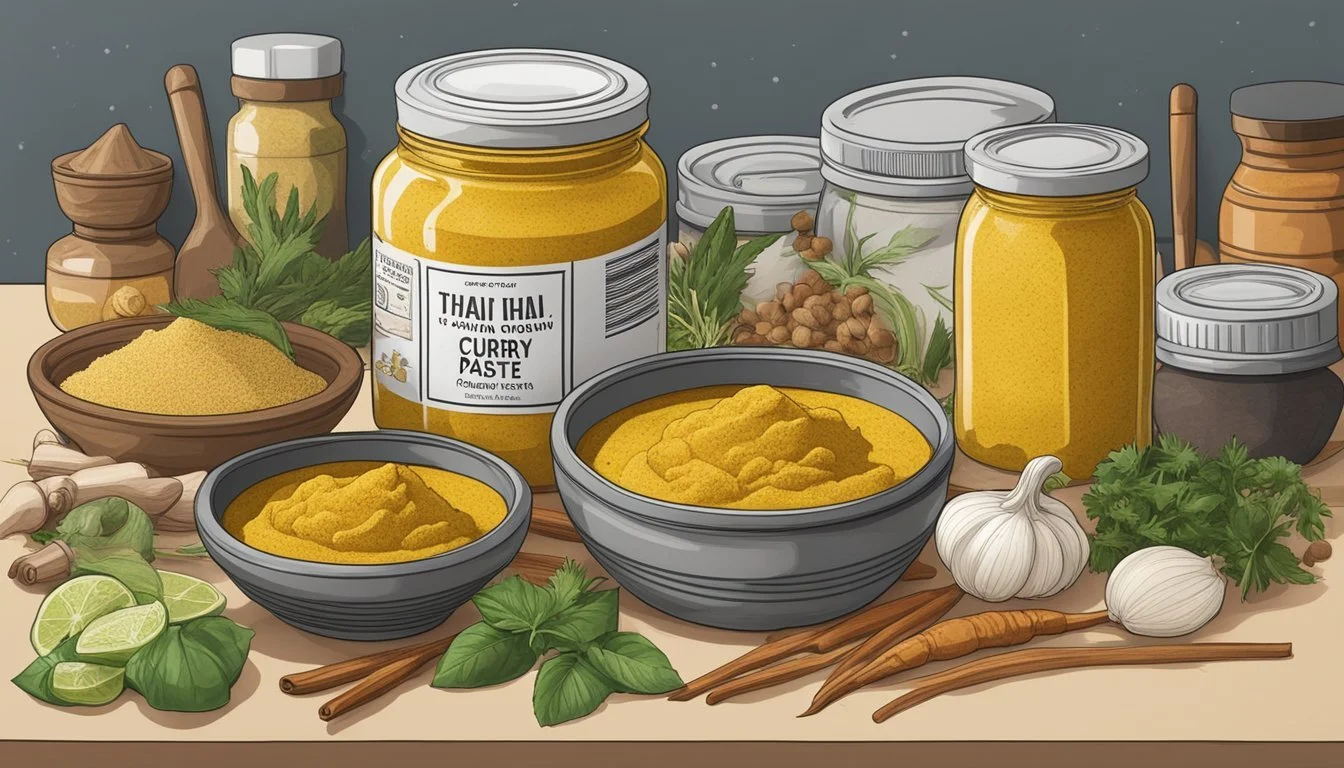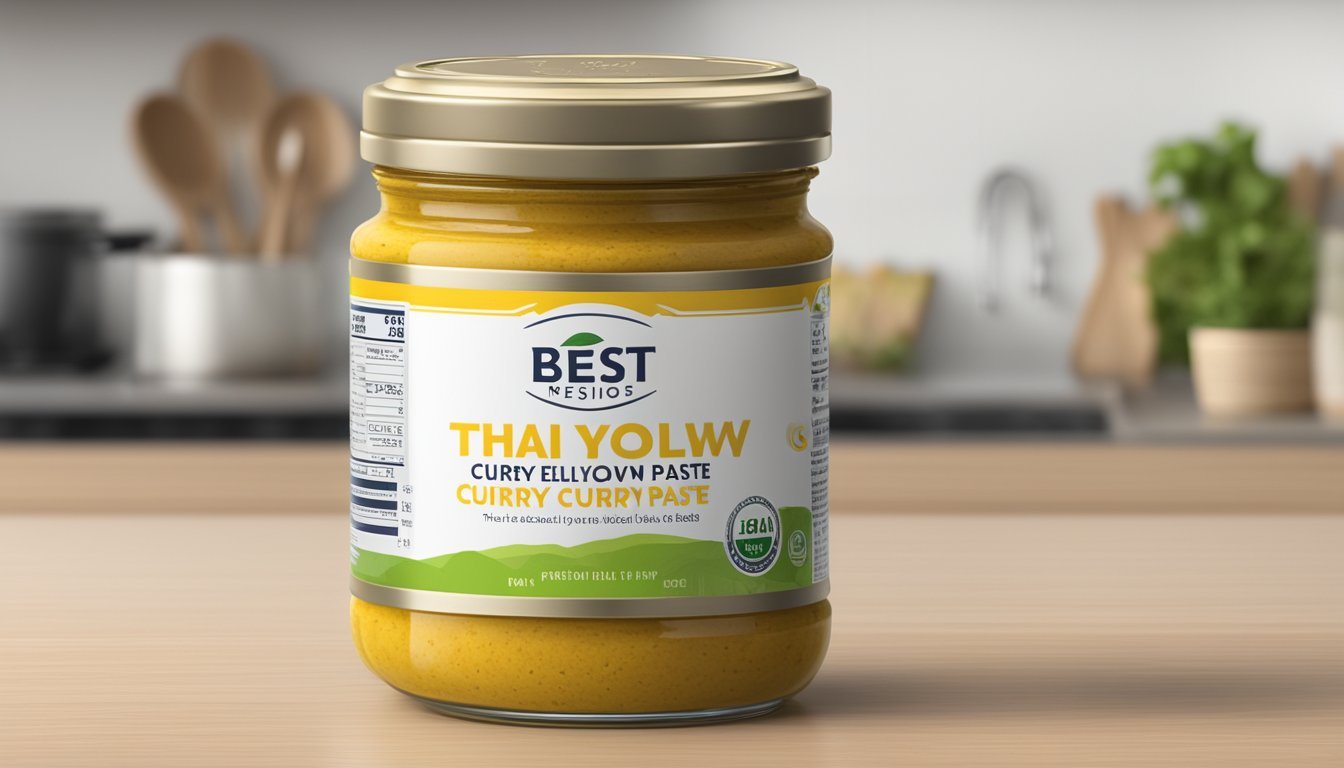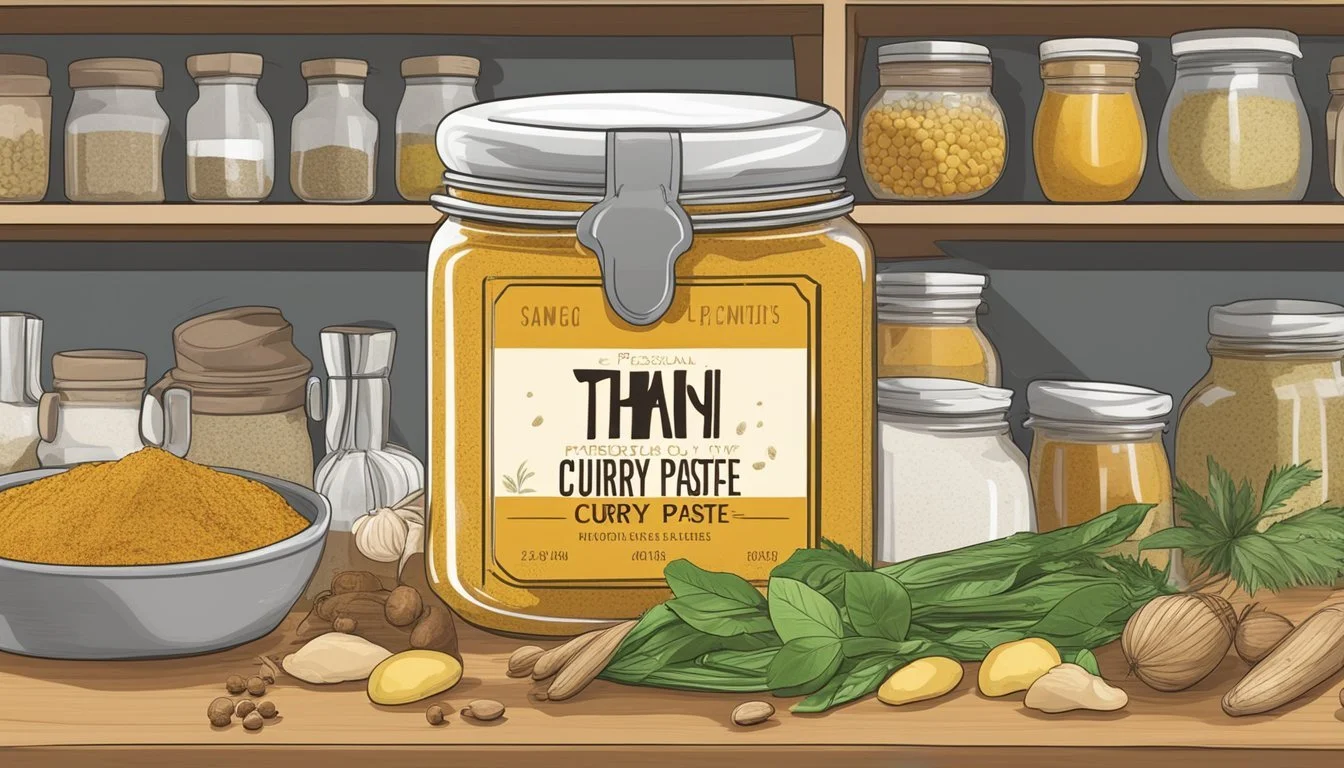Does Thai Yellow Curry Paste Expire? Essential Shelf Life Facts
Thai Yellow Curry Paste is a flavor-packed ingredient known for its versatility and depth in Thai cuisine. Like many other perishable food items, Thai Yellow Curry Paste does expire. Proper storage is crucial to extending its shelf life and maintaining its vibrant flavors.
Once opened, the paste should be stored in an airtight container and kept refrigerated to retain its freshness. While it stays good for a few weeks, flavor deterioration and spoilage can occur if it's not used within a specific timeframe.
Unopened jars can last for years without spoiling if stored correctly, but the quality might not be the same as when fresh. Understanding how to store and monitor the expiration date of your curry paste ensures you get the most out of this essential cooking ingredient.
Understanding Curry Pastes
Curry pastes, particularly in Thai and Indian cuisine, are central to creating vibrant and flavorful dishes. These pastes come in various types, each with its own unique blend of ingredients that define its taste and use.
Types of Thai Curry Pastes
Thai curry pastes are essential in Thai cuisine, each type delivering distinct flavors and heat levels. The three primary types are green, red, and yellow curry pastes.
Green curry paste is usually the spiciest and includes ingredients like green chilies, lemongrass, garlic, ginger, and kaffir lime leaves.
Red curry paste features red chilies, giving it a rich color and a balanced spice level, along with other elements like garlic, galangal, and shrimp paste.
Yellow curry paste, the mildest of the three, gets its color mainly from turmeric and includes spices like coriander and cumin.
Yellow Curry Paste Ingredients
Yellow curry paste stands out with its unique blend of spices that imparts a milder, aromatic flavor. Common ingredients include turmeric, which provides the distinct yellow color, lemongrass, garlic, cumin, ginger, and coriander.
These components not only contribute to its vibrant hue but also to a rich, earthy taste. It often includes ingredients like shallots, cilantro roots, and spices which can add complexity.
This paste is generally softer in heat compared to green and red varieties but still delivers a robust, warm taste that's perfect for curries with chicken, potatoes, and coconut milk.
Comparison with Other Curry Pastes
Thai curry pastes differ significantly from Indian curry pastes in terms of ingredients and flavor profiles.
Thai pastes, such as green, red, and yellow, tend to focus on fresh ingredients like chilies, lemongrass, and galangal. Indian curry pastes might involve a broader range of spices including cumin, coriander, turmeric, and even tomato bases.
Red curry paste typically has a balanced heat and rich color, provided by red chilies, while the yellow paste is milder with turmeric’s warmth.
Indian curry pastes often have deeper, warming spices that can vary widely in intensity, providing a variety of flavors from mild to very spicy, and are often richer due to the inclusion of yogurt, cream, or tomatoes.
Storage and Shelf Life
Thai yellow curry paste must be properly stored to maintain its quality and extend its shelf life. Key factors include temperature, humidity, and storage containers.
Proper Storage Methods
Storage conditions play a crucial role in maintaining the curry paste's quality. Unopened jars should be kept in a cool, dry place away from direct sunlight. Glass jars are preferable for their non-reactive nature and ability to form a good seal. Once opened, the curry paste must be refrigerated.
An airtight container or the original jar tightly sealed with its lid will prevent moisture and air contamination. For extended storage, the paste can be placed in a freezer using a freezer-safe airtight container.
Unopened vs. Opened Curry Paste
The lifespan of unopened jars versus opened jars differs significantly. An unopened jar of Thai yellow curry paste can last for several years if kept in the right environment. Once opened, the paste's shelf life drops to 2 to 4 weeks under proper refrigeration.
Optimal flavor is generally maintained within the first two weeks. Beyond a month, although the paste may still be edible if stored correctly, its flavor quality will begin to deteriorate.
Extending Shelf Life
To maximize the curry paste's shelf life, always use clean utensils to scoop out the required amount. This will help avoid contamination. Refrigerate the paste promptly after each use, ensuring the container is sealed tightly.
For even longer storage, transfer portions into small, freezer-safe airtight containers, then freeze them. Label each container with the date of storage to keep track. When ready to use, thaw only the quantity needed to prevent repeated freezing and thawing, which can degrade the paste's quality.
Signs of Spoilage
Thai yellow curry paste can exhibit several signs when it begins to spoil. Monitoring changes in its appearance, aroma, and texture can help determine if it is still safe to use or should be discarded.
Visual and Texture Changes
Expired curry paste may show noticeable alterations in color and texture. Fresh curry paste usually has a vibrant, consistent color. Spoiled paste might darken or develop patches, indicating oxidation or contamination. Additionally, the paste may separate, with oil rising to the top.
Texture changes can include a gritty or excessively thick consistency. Mold growth is a clear indication of spoilage. If you observe any white, green, or black mold, it's essential to discard the paste immediately to avoid food poisoning.
Changes in Aroma and Flavor
The aroma and flavor of curry paste are strong indicators of its quality. Fresh paste should have a rich, fragrant smell. If the aroma becomes sour, rancid, or off-putting, it likely indicates spoilage. Performing a smell test can be an easy way to assess its condition.
Likewise, the flavor of expired paste may be more robust but in an unpleasant way. A significant change in taste, particularly bitterness or an off-flavor, further confirms the paste is no longer safe to use.
Spoilage from Contamination
Contamination can accelerate spoilage, leading to bacterial growth. Airtight storage is crucial to prevent exposure to moisture and bacteria. If the jar or container has rusted or is not properly sealed, bacteria can thrive, making the paste unsafe.
Signs of bacterial contamination include bubbles, a slimy texture, or an unusual fermentation odor. Consuming contaminated curry paste can lead to food poisoning. Always ensure the paste is stored correctly and inspect the container for any damage before use.
Usage and Safety
Thai yellow curry paste can remain safe to use well beyond its expiration date if stored correctly. While the paste's quality and flavor may diminish over time, understanding how to determine its usability and taking necessary safety precautions is crucial.
Determining Usability
Unopened Thai yellow curry paste can be safe for years if stored in a cool, dry place. Check the expiration date on the package to get an idea of its intended shelf life.
Inspect the paste for visual changes such as mold or discoloration—these are signs it may be unsafe to use. Smell the paste; if it has a rancid or unusual odor, discard it.
Taste a small amount if the visual and olfactory checks are passed. If the curry paste retains its characteristic flavor and heat, it is likely still good to use. Refrigerate once opened and use within a month for best quality.
Safety Precautions with Expired Curry Paste
Even if the curry paste looks and smells fine, it is important to consider potential bacterial growth.
Store opened curry paste in the refrigerator and try to use it within a few weeks to minimize food safety risks. Avoid contamination by using clean utensils each time you scoop out the paste.
When using expired paste in recipes, ensure it is cooked thoroughly to eliminate any bacteria that might cause food poisoning. Monitor for symptoms such as nausea or stomach upset after consumption.
While using expired curry paste can be safe, always weigh these precautions to avoid any health risks. Proper storage and mindful usage are key to maximizing the safety and flavor of Thai yellow curry paste.
Impact of Exposure Factors
Certain environmental and physical factors significantly impact the shelf life and quality of Thai yellow curry paste. Understanding these factors can help in preserving its freshness for the longest period.
Effects of Air and Humidity
Exposure to air and humidity promotes spoilage. When Thai curry paste comes into contact with air, the oils in the paste can oxidize, leading to rancidity and off-flavors. It is essential to store the paste in airtight containers to minimize air exposure.
Humidity also encourages bacteria growth, accelerating spoilage. Refrigerating the paste after opening reduces exposure to air and moisture, maintaining the paste’s quality and safety. Regularly checking the container for a secure seal prevents unwanted exposure as well.
Temperature and Light Influence
Temperature and light play crucial roles in the paste's longevity. Room temperature storage can hasten spoilage due to accelerated bacterial growth and oil degradation. Keeping the paste refrigerated inhibits these processes, extending its usability.
Direct sunlight is particularly harmful, as it promotes chemical reactions that degrade the flavors and colors. Storing the paste in a dark, cool place is advisable to prevent spoilage. Consistent temperature control, especially avoiding heats and freezes, ensures the best preservation.
Physical Damage and Packaging
The condition of the packaging directly affects the paste’s shelf life. Physical damage, such as dents or holes in the container, can lead to contamination and spoilage. Rust and leaching from damaged packaging may compromise the paste’s safety.
Using containers with a secure lid and intact seals is critical. Manufacturers often include preservatives to enhance shelf life, but storing the paste properly in undamaged, airtight packaging remains vital. Pressuring and regularly inspecting the container prevents potential spoilage due to physical damage.
Conclusion
Yellow curry paste, like other food products, has a limited shelf life.
Unopened jars of yellow curry paste can last for several years when stored in a cool, dry place. These conditions help maintain the paste’s freshness and quality.
Once opened, proper storage becomes crucial. The paste should be transferred to an airtight container and refrigerated.
Refrigerated yellow curry paste can remain fresh for around 3 to 4 weeks. Past this timeframe, its flavors begin to degrade, impacting the dish's overall taste.
Signs of spoilage, such as changes in color, texture, or odor, should be monitored. If any of these are noticed, the paste should be discarded.
Key Points:
Unopened: Store in a cool, dry place.
Opened: Transfer to an airtight container, refrigerate.
Shelf Life: 3 to 4 weeks in the refrigerator.
By following these storage recommendations, the quality and flavor of yellow curry paste can be maintained effectively.







